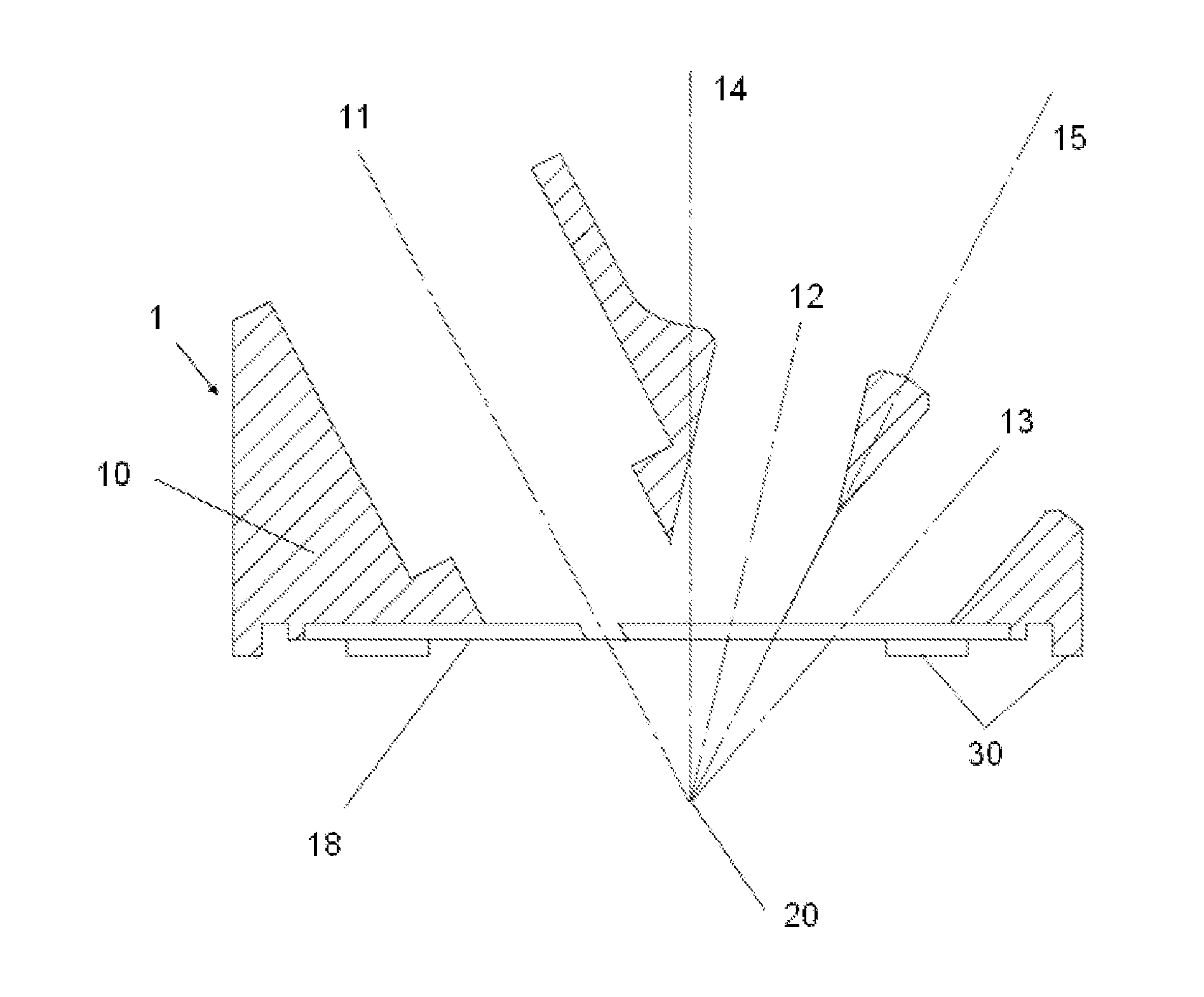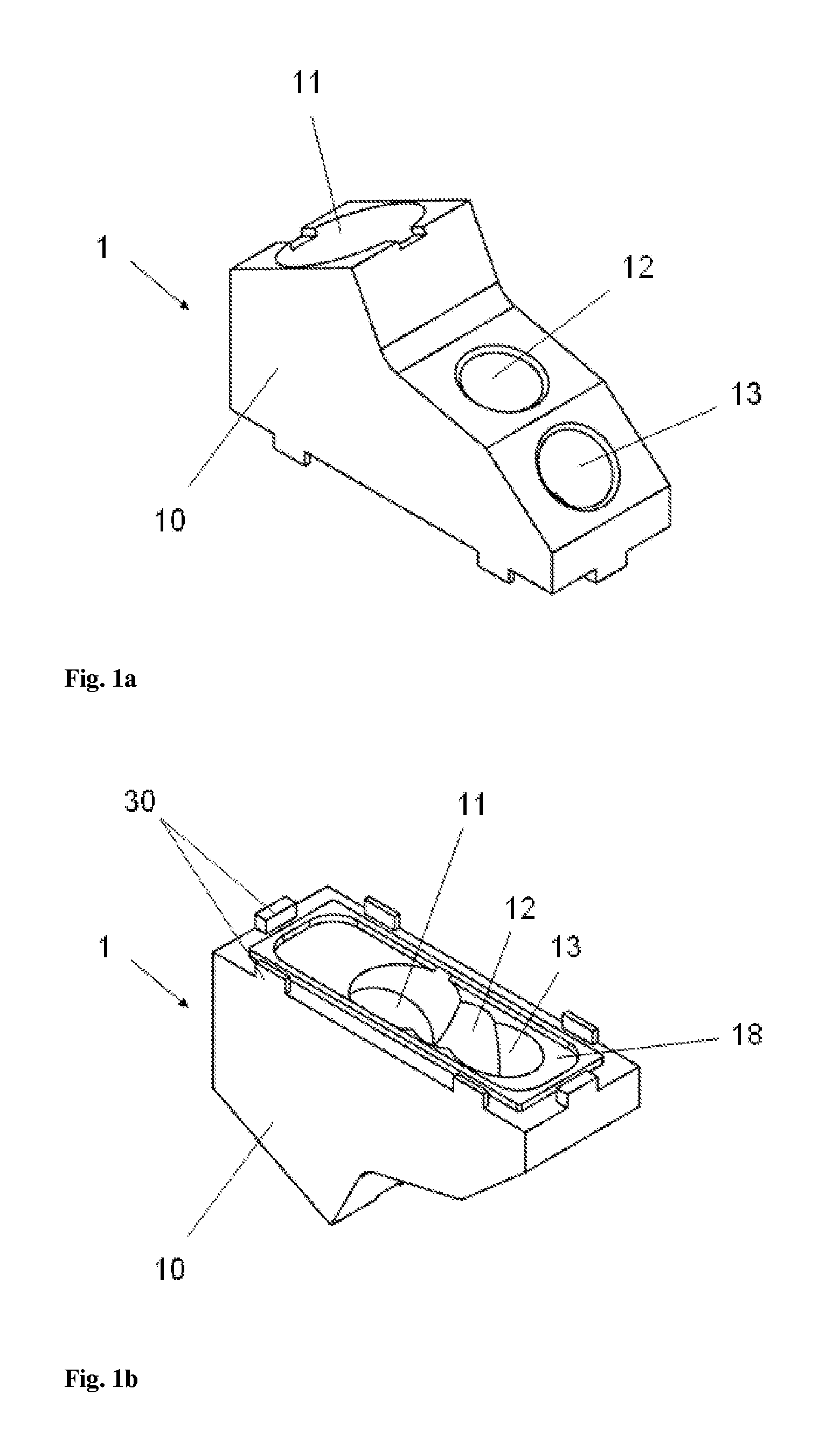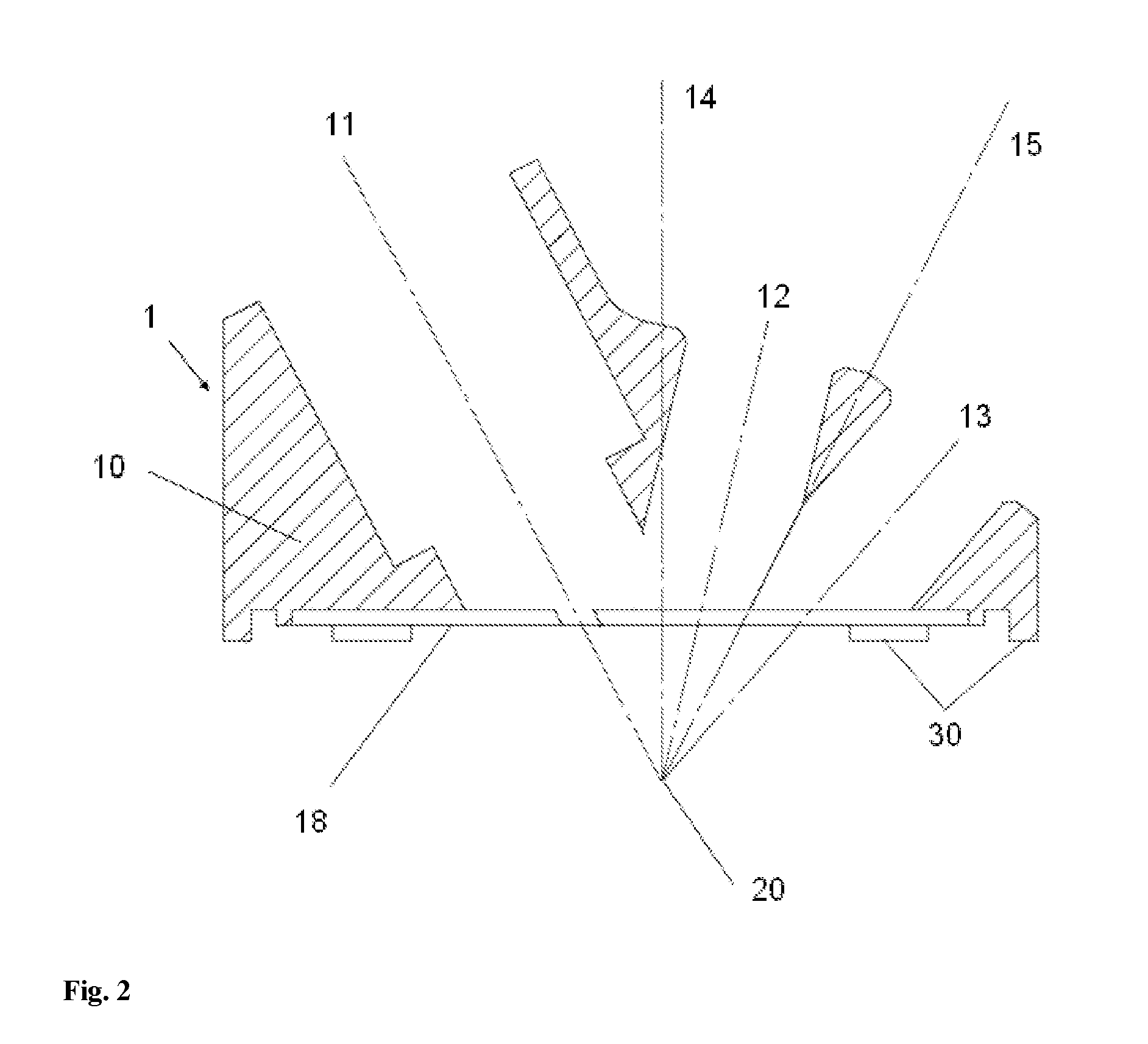Optical Sensor
a technology of optical sensors and optical holograms, applied in the field of optical sensors, can solve the problems of inability to reproduce the effect of normal means, inability to customize objects by embossed holograms, and disadvantages of authenticity checking by means of microscopes, and achieve the effect of reducing costs and shortening tim
- Summary
- Abstract
- Description
- Claims
- Application Information
AI Technical Summary
Benefits of technology
Problems solved by technology
Method used
Image
Examples
Embodiment Construction
[0088]FIGS. 1a and 2b show a sensor 1 according to the invention without optical components in a perspective illustration. FIG. 2 shows the sensor 1 from FIGS. 1a and 1b in cross section.
[0089]The central element of the sensor 1 is formed by a block 10, which is preferably embodied in one or two pieces and which serves for receiving all the optical components of the sensor according to the invention.
[0090]Optical components are understood to mean all components of the sensor which are arranged in the beam path between radiation source and photodetector, including the laser and the photodiodes themselves. Optical elements form a selection of the optical components; they serve for beam shaping and focussing. In particular, lenses, diaphragms, diffractive optical elements and the like are referred to as optical elements.
[0091]The optical block 10 comprises an identified outer surface 18, which is directed at the object during the detection of characteristic reflection patterns of said ...
PUM
| Property | Measurement | Unit |
|---|---|---|
| angle | aaaaa | aaaaa |
| thickness | aaaaa | aaaaa |
| distance | aaaaa | aaaaa |
Abstract
Description
Claims
Application Information
 Login to View More
Login to View More - R&D
- Intellectual Property
- Life Sciences
- Materials
- Tech Scout
- Unparalleled Data Quality
- Higher Quality Content
- 60% Fewer Hallucinations
Browse by: Latest US Patents, China's latest patents, Technical Efficacy Thesaurus, Application Domain, Technology Topic, Popular Technical Reports.
© 2025 PatSnap. All rights reserved.Legal|Privacy policy|Modern Slavery Act Transparency Statement|Sitemap|About US| Contact US: help@patsnap.com



